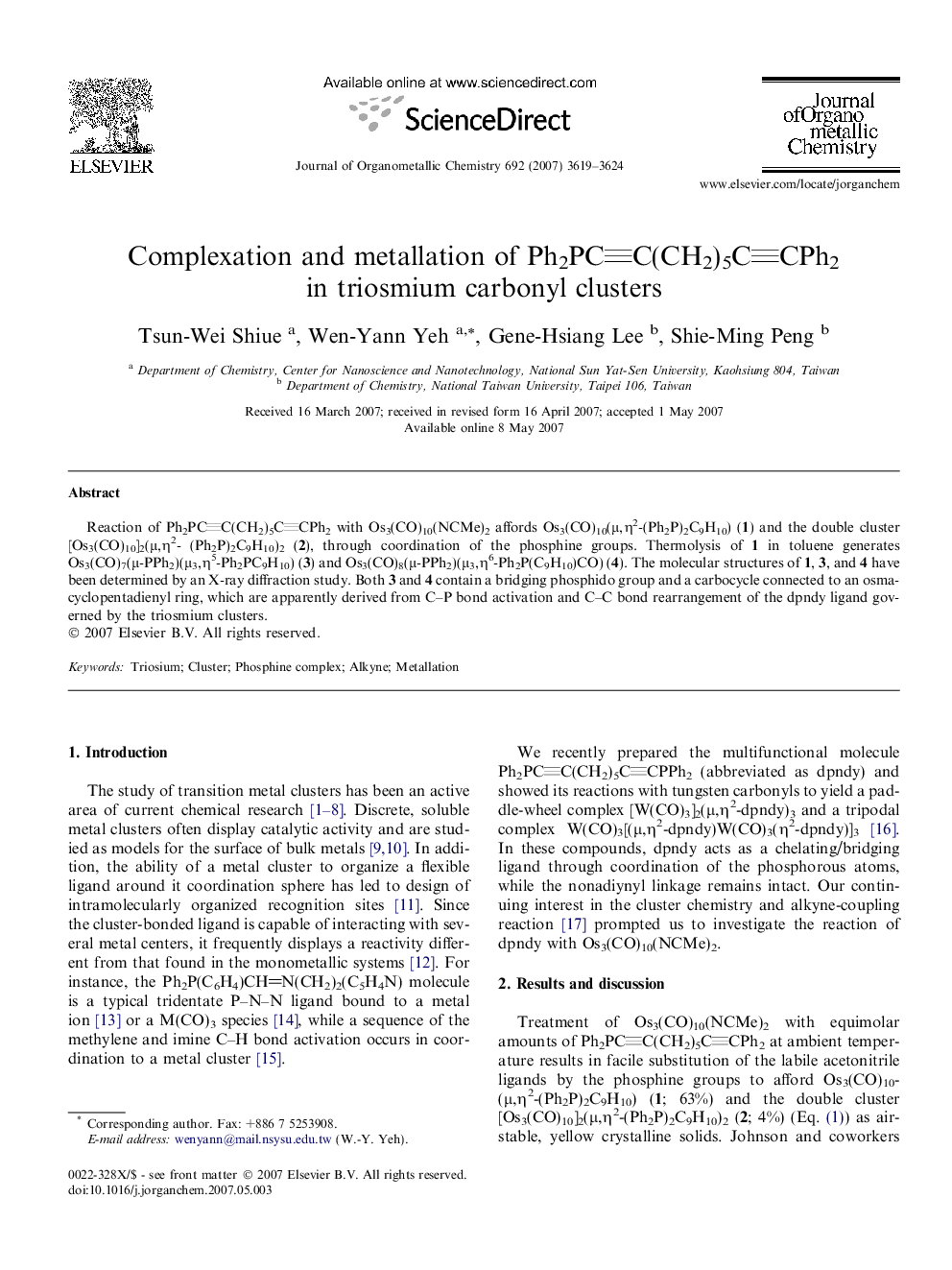| Article ID | Journal | Published Year | Pages | File Type |
|---|---|---|---|---|
| 1326515 | Journal of Organometallic Chemistry | 2007 | 6 Pages |
Reaction of Ph2PCC(CH2)5CCPh2 with Os3(CO)10(NCMe)2 affords Os3(CO)10(μ,η2-(Ph2P)2C9H10) (1) and the double cluster [Os3(CO)10]2(μ,η2- (Ph2P)2C9H10)2 (2), through coordination of the phosphine groups. Thermolysis of 1 in toluene generates Os3(CO)7(μ-PPh2)(μ3,η5-Ph2PC9H10) (3) and Os3(CO)8(μ-PPh2)(μ3,η6-Ph2P(C9H10)CO) (4). The molecular structures of 1, 3, and 4 have been determined by an X-ray diffraction study. Both 3 and 4 contain a bridging phosphido group and a carbocycle connected to an osmacyclopentadienyl ring, which are apparently derived from C–P bond activation and C–C bond rearrangement of the dpndy ligand governed by the triosmium clusters.
Graphical abstractReaction of Ph2PCC(CH2)5CCPh2 with Os3(CO)10(NCMe)2 affords Os3(CO)10(μ,η2-(Ph2P)2C9H10) (1), and thermolysis of which produces Os3(CO)7(μ-PPh2)(μ3,η5-Ph2PC9H10) (3) and Os3(CO)8(μ-PPh2)(μ3,η6-Ph2P(C9H10)CO) (4) via C–P bond activation and C–C bond rearrangement of the ligand.Figure optionsDownload full-size imageDownload as PowerPoint slide
